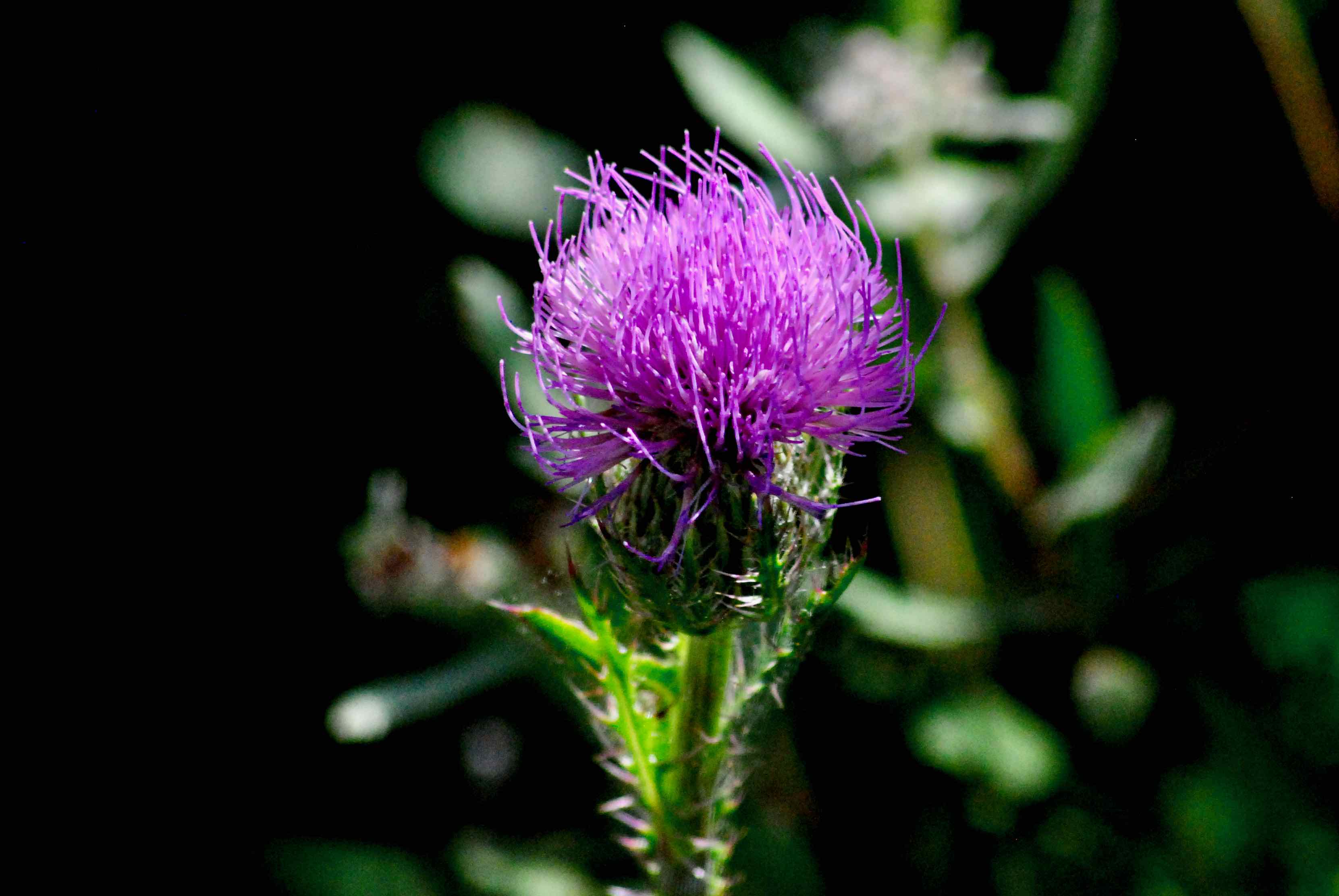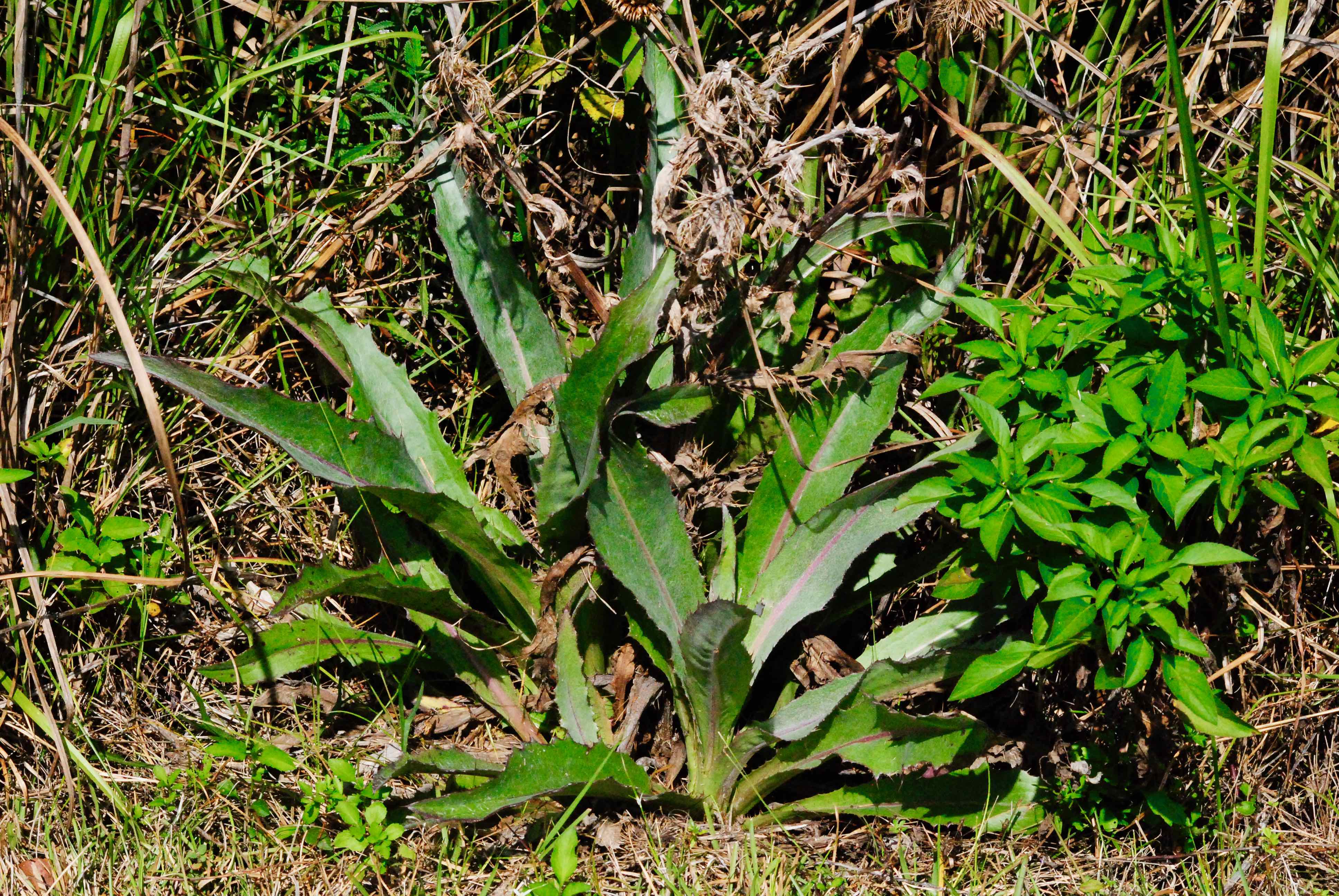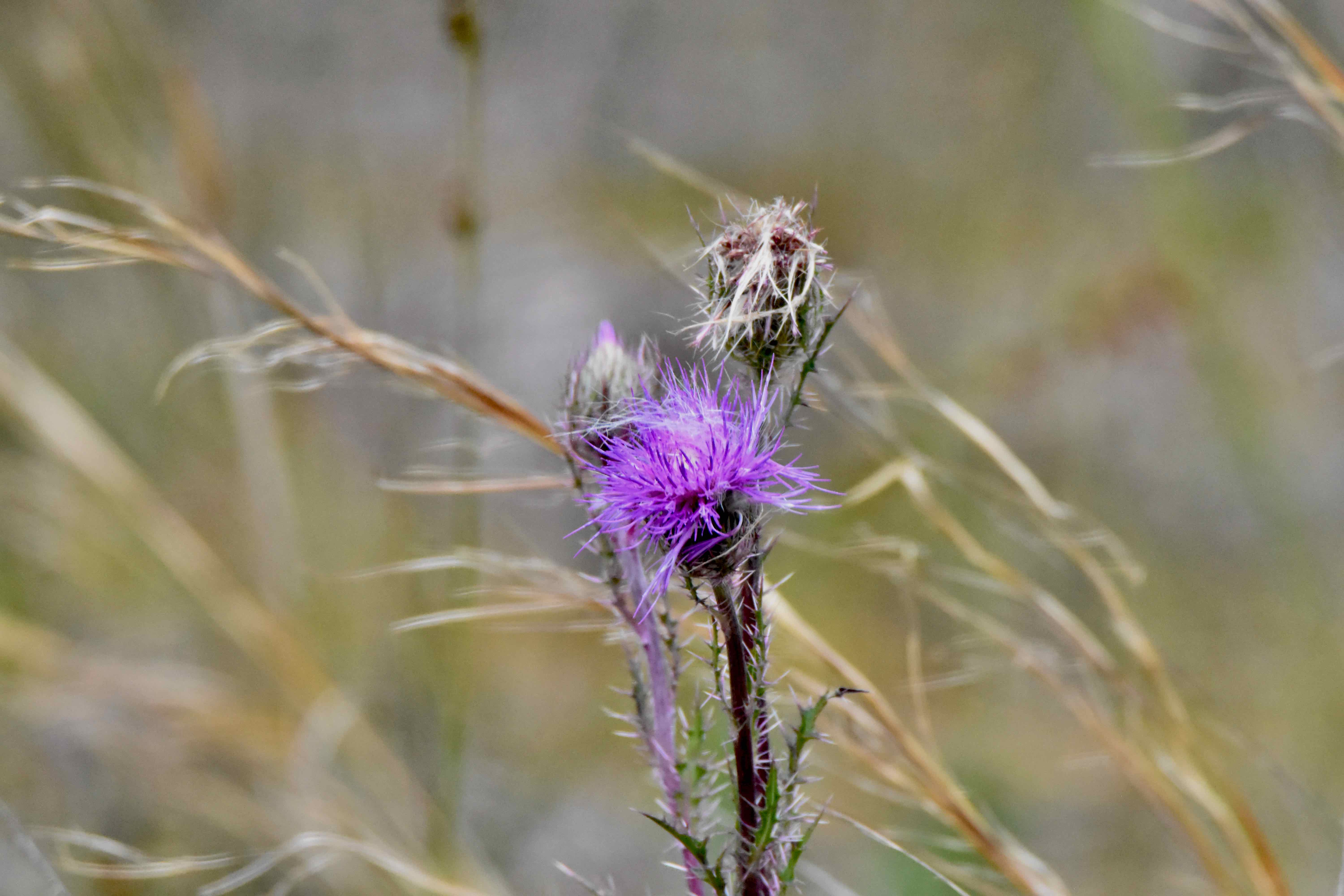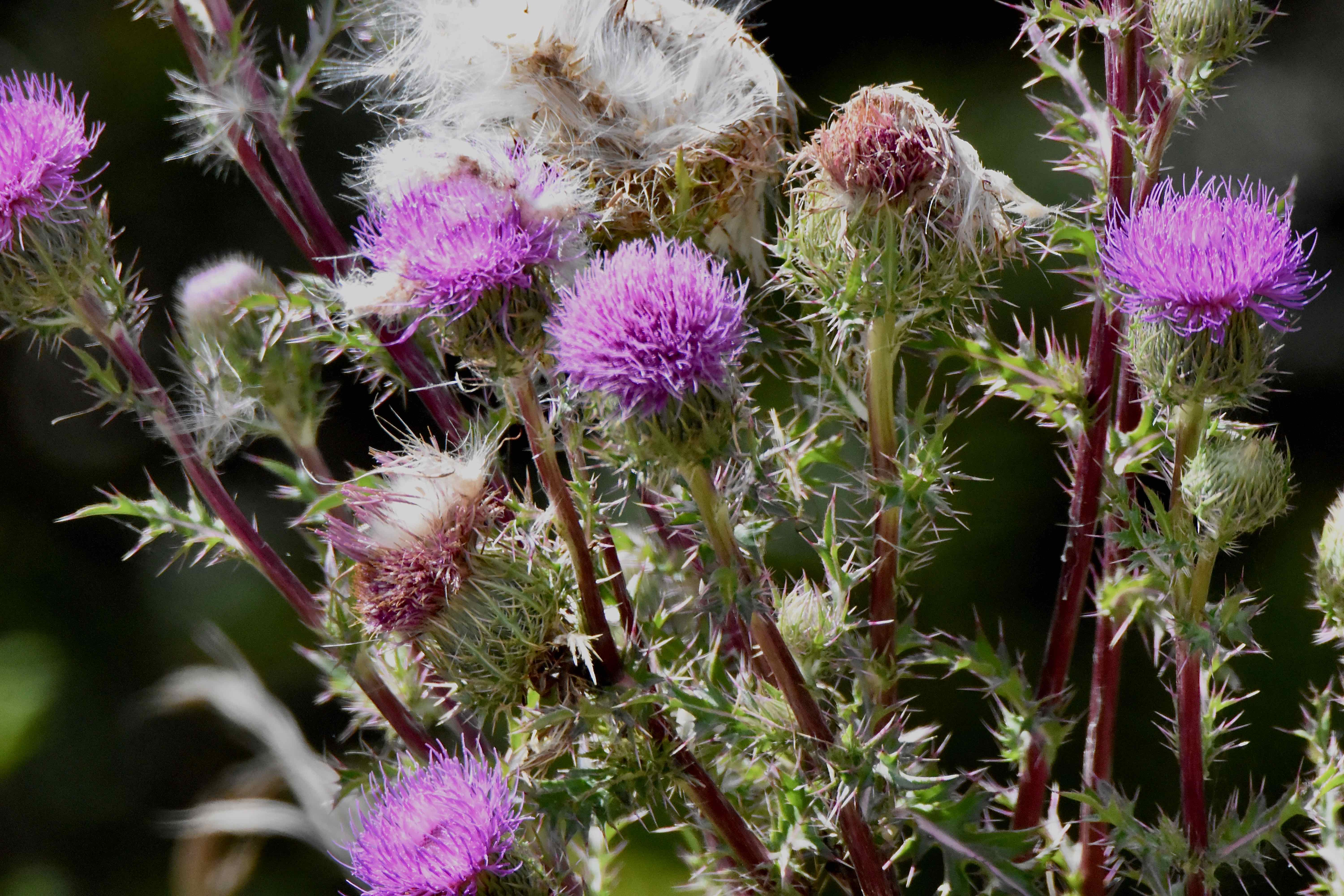
Purple thistle, photographed at Cypress Creek North Natural Area, Jupiter, Palm Beach County, in March 2018.
To the folks at the United States Department of Agriculture, purple thistle, Cirsium horridulum, is yellow thistle. They're not color-blind, nor are they looking at a different species. It's just that the flower of this plant can vary in color that much.
It can be deep purple, or it can be nearly white. What we've seen so far is mostly lavender, eye-catching enough that we once pulled off a busy highway to get a closer look at some roadside plants. However, the photos on this page were taken within the relative safety of Cypress Creek North Natural Area, Jonathan Dickinson State Park and in Everglades National Park. Purple thistle is a Florida native, commonly found throughout the state. It's typically found in pinelands and prairies. As we noted above, it's also found along roadsides. It is a common pasture weed throughout the south.
Purple thistle grows from a rosette base, with sharply toothed leaves that are covered with sharp spines that are the source of its scientific name, horridulum. Think dandelion, except that it is much larger, the foliage denser and more vertical, especially when in bloom. Normally, the plant is about 12 to 18 inches high, but can spike to 36 inches or more when flowering, typically spring and fall. Seeds are attached to silky threads designed to catch the wind, a textural counterpoint to those spines.
Purple thistle varies enough in form that the Flora of North America counts four accepted "races", or subspecies, of the plant. The color of the flowers, however, can vary within each race, even within populations.
Purple thistle is grown by some for restorations and natural landscapes. It's also used in wildflower and butterfly gardens.
It is a host for the little metalmark and painted lady butterflies, and a major nectar source for other butterflies, bees and wasps. The seeds provide some food for birds, particularly finches, as well.
Purple thistle is edible, although the spines have to be dealt with first, and the stalks become tough as they age. A tea can be made from the leafs, according to Eat the Weeds. The Houma of Louisiana used purple thistle to make a skin aid and an expectorant (cough medicine). They also ate the heart of the plant raw. Seminoles used the thorns of purple thistle to make darts for blowguns.
While Florida's purple thistle population is secure, Connecticut, New Hampshire, Rhode Island and Pennsylvania (which calls it horrible thistle) have declared theirs as endangered or threatened. On the other hand, Arkansas and Iowa consider it a noxious weed. It is a member of Asteraceae, the sunflower family. Other names: bull thistle, bristle thistle, spiny thistle, horrid thistle.
Click on photo for larger image
U.S. Department of Agriculture Distribution Maps
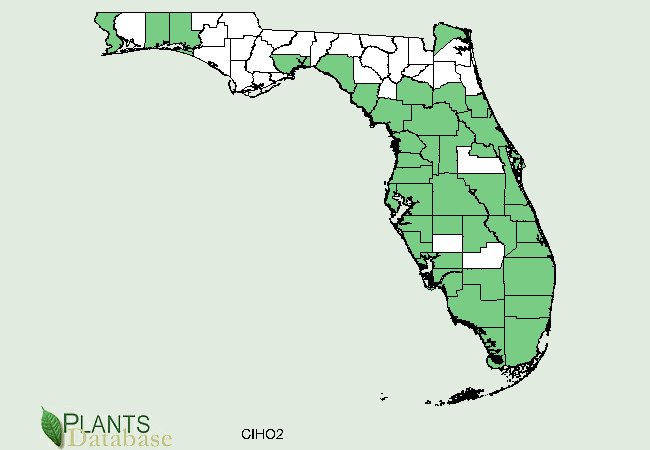

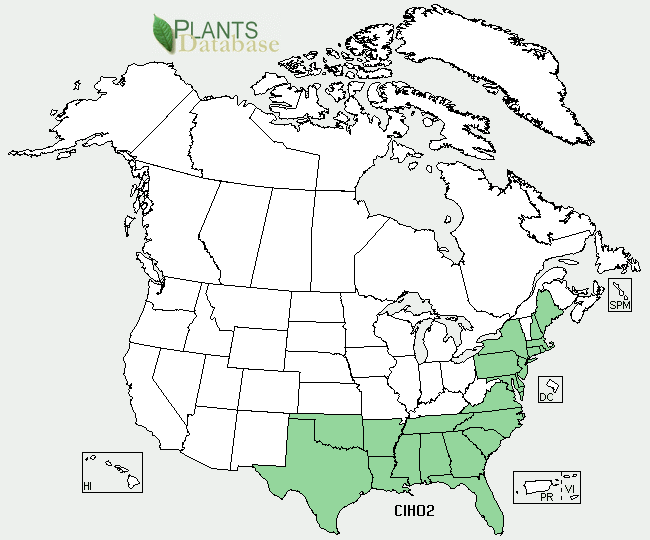
Links for Purple Thistle

